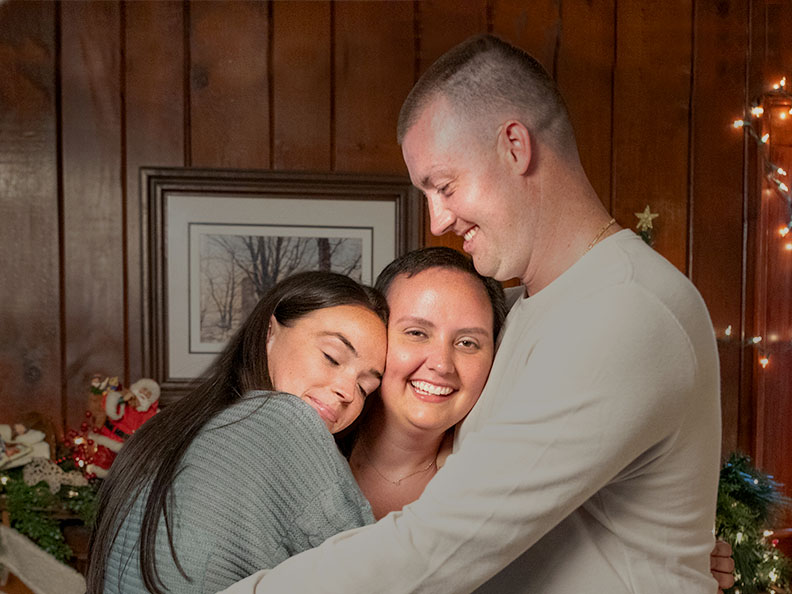Your gift is 100% tax deductible
What Do Doctors Look for in Biopsy and Cytology Samples?
After your biopsy and cytology samples have been prepared, a doctor called a pathologist will determine if the cells in the sample are cancer and, if so, provide information about the cancer to help your doctors determine the right treatment options for you.
Here is information about what pathologists look for when they analyze your biopsy or cytology samples.
General characteristics
Various tissues and organs look different from each other under a microscope. This is because they are formed by different types of cells and because the cells are arranged differently. Even more importantly, diseases like cancer can change the usual appearance of each type of cell, tissue, or organ.
Most tissue and cell samples are looked at by pathologists, doctors with special training in diagnosing diseases by lab tests. Sometimes, other doctors will also examine samples or tissues of organs related to their area of expertise. For example, hematologists (doctors who specialize in blood disorders) often look at blood and bone marrow samples from their patients, and some dermatologists (doctors specializing in skin diseases) will look at their patients’ skin biopsy specimens.
Some features that doctors look for under a microscope are important only if they are found in certain types of tissue, while others are more important if they are found in almost all tissues.
Here are a few general concepts to help you better understand how doctors decide if cancer is present.
Size and shape of the cells
Cancer cells are often abnormal in terms of their size and shape. They may be either smaller or larger than normal cells. Normal cells often have certain shapes that help them do their jobs. Cancer cells usually don’t function in a useful way, and their shapes are often distorted. Unlike normal cells, which tend to have the same size and shape, cancer cells often vary in their sizes and shapes.
Size and shape of the cell’s nucleus
The nucleus is the center of the cell that contains the cell’s DNA. Typically, the nucleus of a cancer cell is larger than that of a normal cell, and its size and shape can vary greatly. And after being stained with certain dyes, the nucleus of a cancer cell looks darker than a normal nucleus. The nucleus from a cancer cell is larger and darker because it often contains too much DNA.
Arrangement of the cells
The arrangement of normal cells reflects the function of each tissue. For instance, gland tissue in the female breast, which produces milk during breastfeeding, is organized into lobules where the milk is made, and ducts that carry the milk from the lobules to the nipple. Cells of the stomach also form glands, to make enzymes and acid that digest the food, as well as mucus that helps protect the stomach lining.
When cancers develop in the breast, stomach, and other glandular tissues, the cancer cells no longer form normal glands like they should. Sometimes they form abnormal or distorted glands. Sometimes they form clumps of cells that don’t look like glands at all.
While normal cells stay where they belong within a tissue, cancer cells often grow into (invade) nearby tissues. The ability of cancer cells to invade reflects the fact that their growth and movement isn’t properly coordinated with their neighboring cells. This ability to invade is how cancer spreads into and damages nearby tissues.
And, unlike normal cells, cancer cells can metastasize (spread through blood vessels or lymph vessels) to distant parts of the body. Knowing this helps doctors recognize cancers under a microscope, because finding certain types of cells where they don’t belong is a useful clue that they might be cancer.
The type of cancer
Different kinds of cancer are often referred to by the organ or part of the body they started in. But cancer types are also named according to which type of normal cells and tissues they look like most.
There are several basic types of cancer, which doctors can further classify into hundreds or even thousands of types, based on how they look under a microscope. For example, cancers that look like glandular tissues are called adenocarcinomas. Other cancers that look like certain immune system cells are called lymphomas, and those that look like connective tissue (such as bone or fatty tissue) are sarcomas.
Grading the cancer
For many types of cancer, doctors also determine how closely the cancer cells and the growth patterns look like the normal cells or tissues. This is the grade of the cancer.
Cancers that look more like normal tissues are called low grade (or well differentiated), while those that don’t look much like normal tissues are called high grade (or poorly differentiated). For some types of cancer, grading might be done using a number scale, such as from 1 to 3, with grade 1 being a low-grade cancer and grade 3 being a high-grade cancer.
High-grade cancers tend to grow and spread faster than low-grade cancers. This might affect a person’s treatment options, as well as their prognosis (outlook).
- Written by

The American Cancer Society medical and editorial content team
Our team is made up of doctors and oncology certified nurses with deep knowledge of cancer care as well as editors and translators with extensive experience in medical writing.
Last Revised: August 1, 2023
American Cancer Society medical information is copyrighted material. For reprint requests, please see our Content Usage Policy.
American Cancer Society Emails
Sign up to stay up-to-date with news, valuable information, and ways to get involved with the American Cancer Society.



